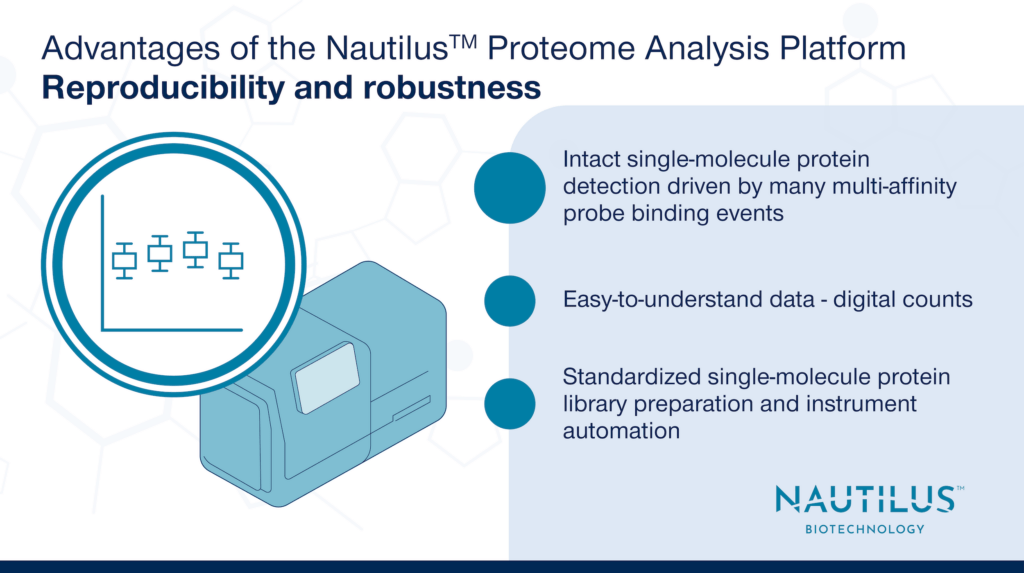
Advantages of the Nautilus Proteome Analysis Platform – Reproducibility and robustness

Tyler Ford
February 8, 2024

Reproducibility and robustness are essential to any research endeavor but are particularly important when studying something as complex and dynamic as the proteome. Researchers and institutions make large investments in experiments studying biology at proteome scale. They expect that data generated from such experiments will be robust enough to guide future research efforts. This data must hold from study to study and be reproducible from institution to institution. Only with the confidence that such reproducibility inspires can researchers efficiently move forward with biomarker and drug development efforts and reach the clinic quickly.
The NautilusTM Proteome Analysis Platform was conceived with reproducibility and robustness at its core. The platform is designed to consistently generate high quality data and we cover some of the key factors designed to enable its reproducibility and robustness here.
Key characteristics designed to make the NautilusTM Platform reproducible and robust
Intact, single-molecule protein counting driven by iterative multi-affinity probe binding events
The Nautilus Platform isolates intact, full-length, single-molecule proteins and identifies them using multi-affinity probes designed to bind 3 amino acid epitopes shared across many proteins. By building information over many binding cycles (~300) the platform identifies most proteins through 20 binding events or less and the majority of proteins are bound more than 30 times. Thus, single-molecule protein detection and quantification are driven by many observations. This results in high confidence identifications that are not dependent on individual observations, which are more subject to error.
Easy-to-understand data – digital counts
Protein abundance is then determined by simply counting the single protein molecules identified. There is little room for error in abundance measurements because there is no need to extrapolate abundance from other measurements that must be thresholded or normalized. Instead, single-molecule detection = quantification and researchers get easy-to-understand readouts of digital protein counts.
Standardized single-molecule protein library preparation and instrument automation
As part of our platform’s standard workflow, we will provide kits for single-molecule protein library preparation from customer samples. These are designed to make the library preparation process as simple and straightforward as possible. Once protein libraries are generated, they are loaded onto the platform where automated robotics handle the rest. This hands-off approach leaves little room for experimenter error and helps ensure reproducibility.
Solving frustrations with traditional proteomic analysis
We built the Nautilus Proteome Analysis Platform with a keen awareness of researcher’s frustrations with proteomics tools today. Researchers consistently tell us that traditional proteomic analysis workflows are too technically demanding and lead to unreliable data. From sample preparation to results, we have designed our workflows to be as simple and straightforward as possible. Thus, our platform should solve researchers’ frustrations directly and provide reproducible and robust results of the highest caliber.
MORE ARTICLES
